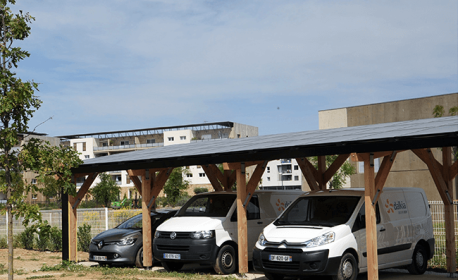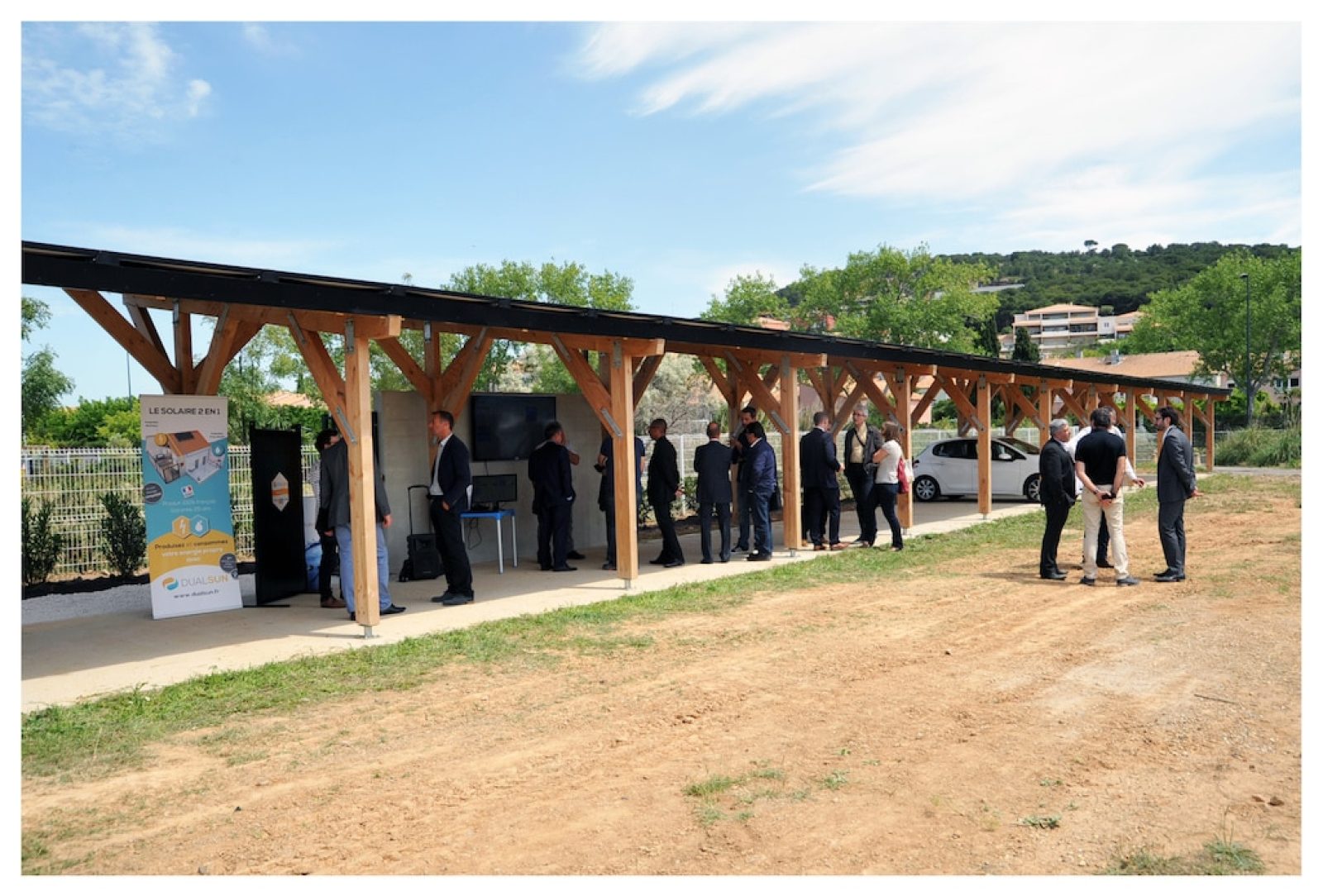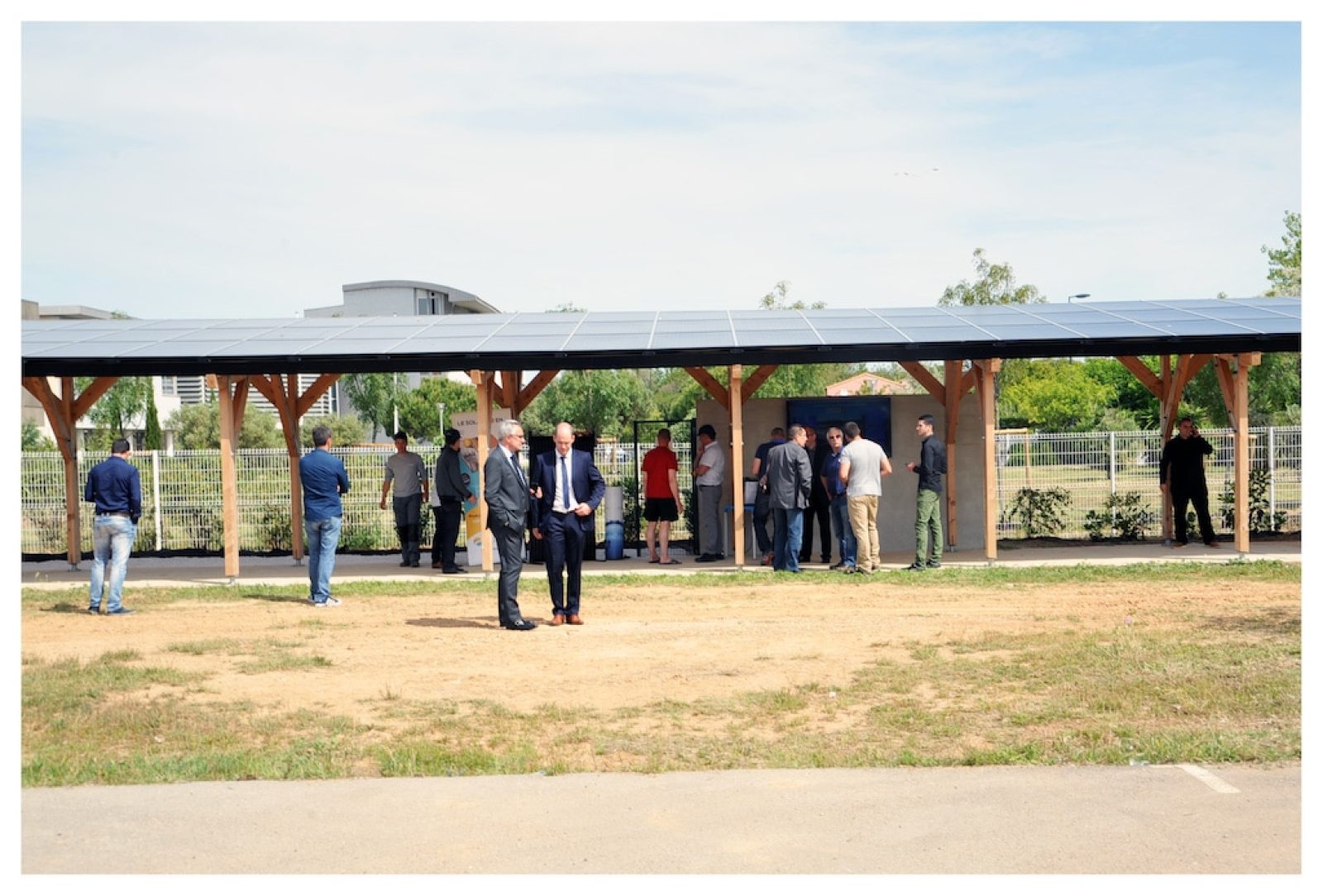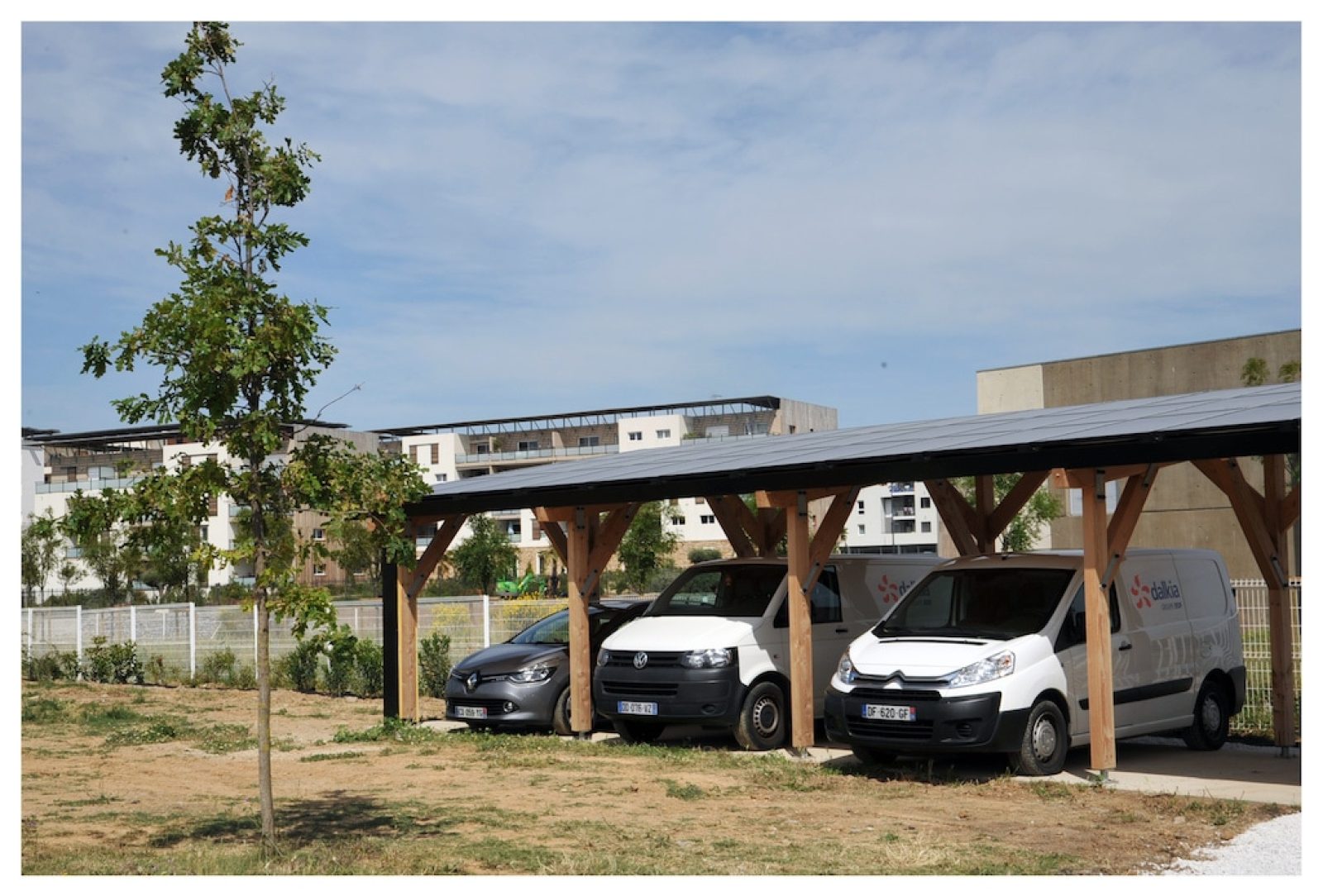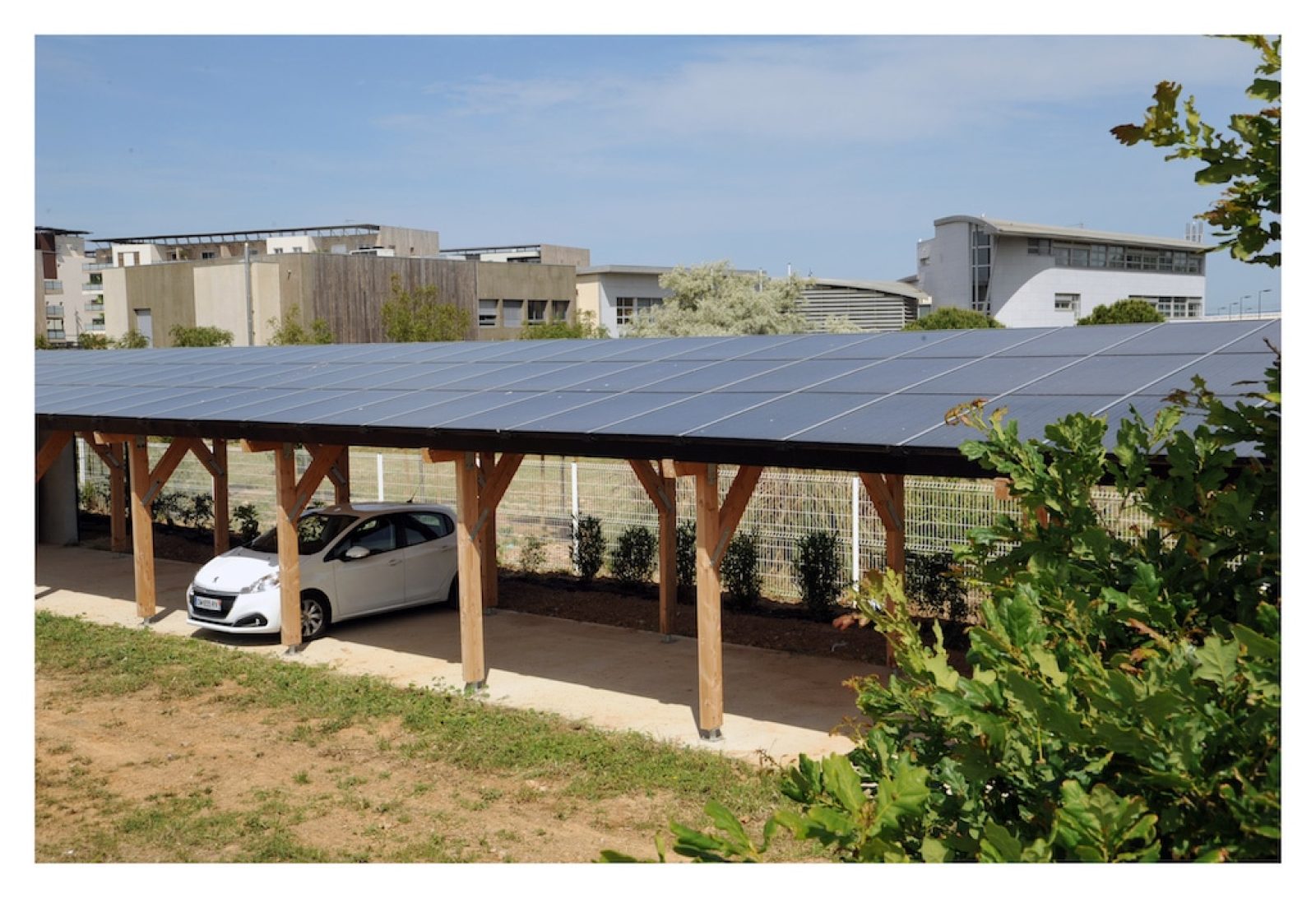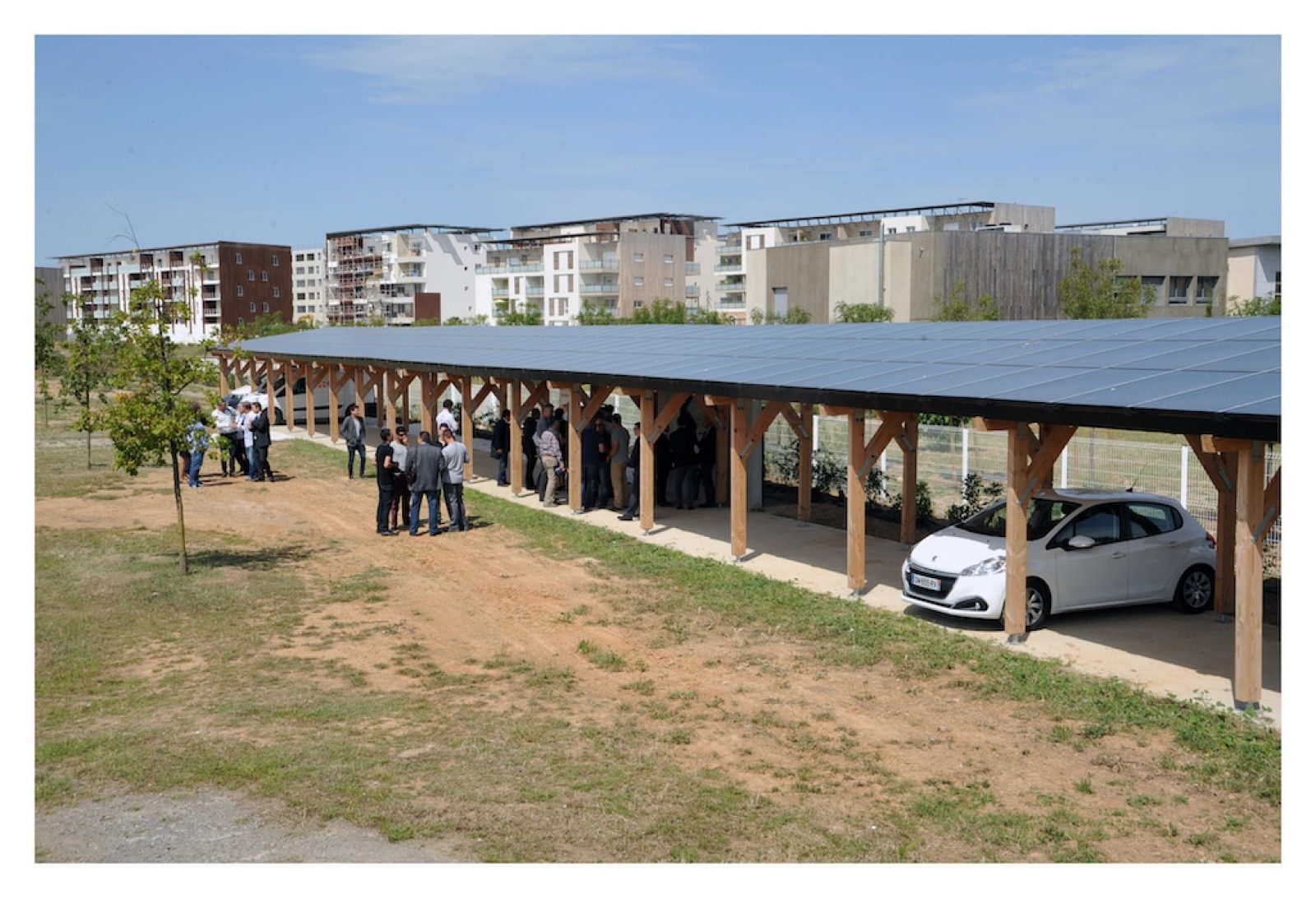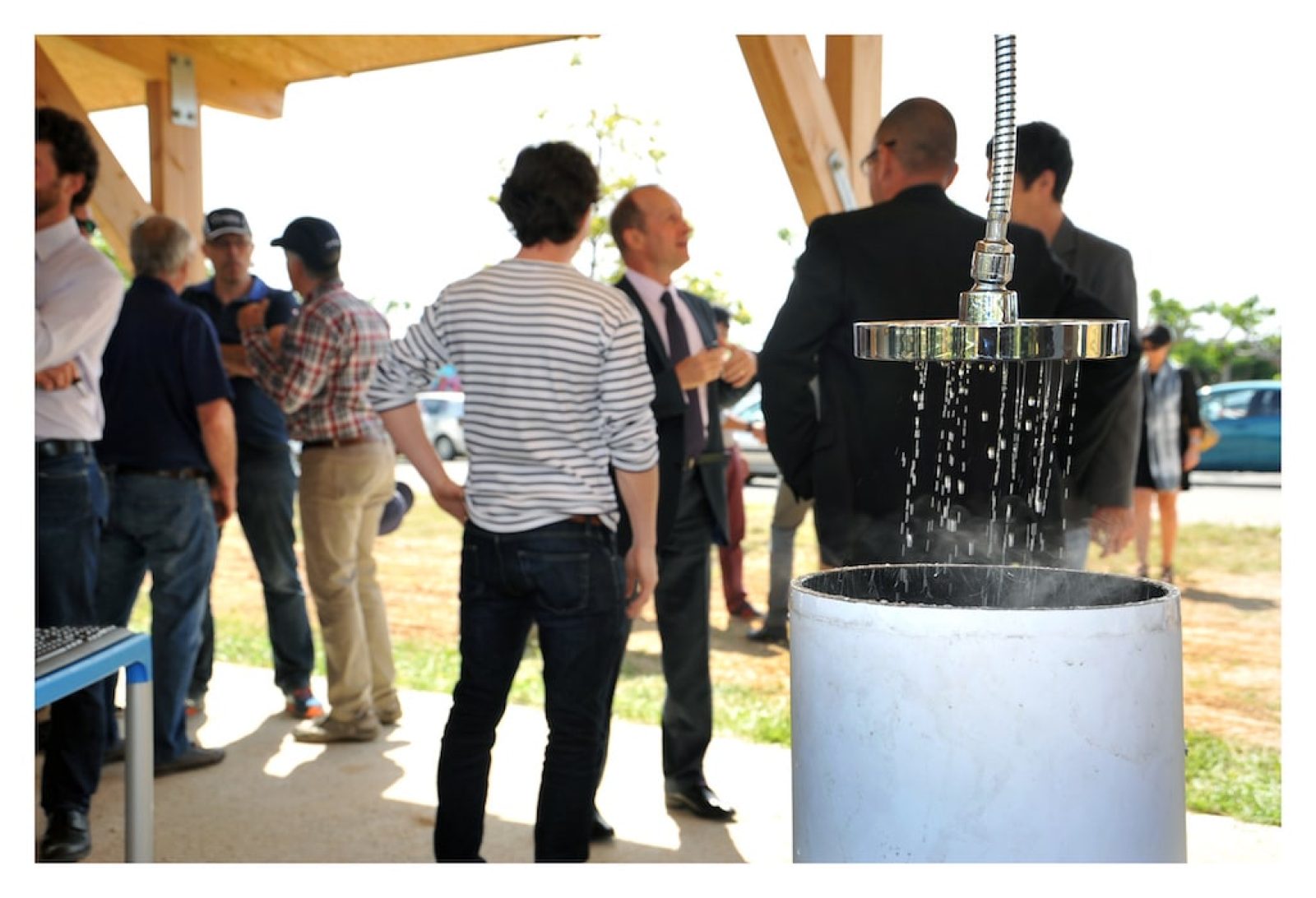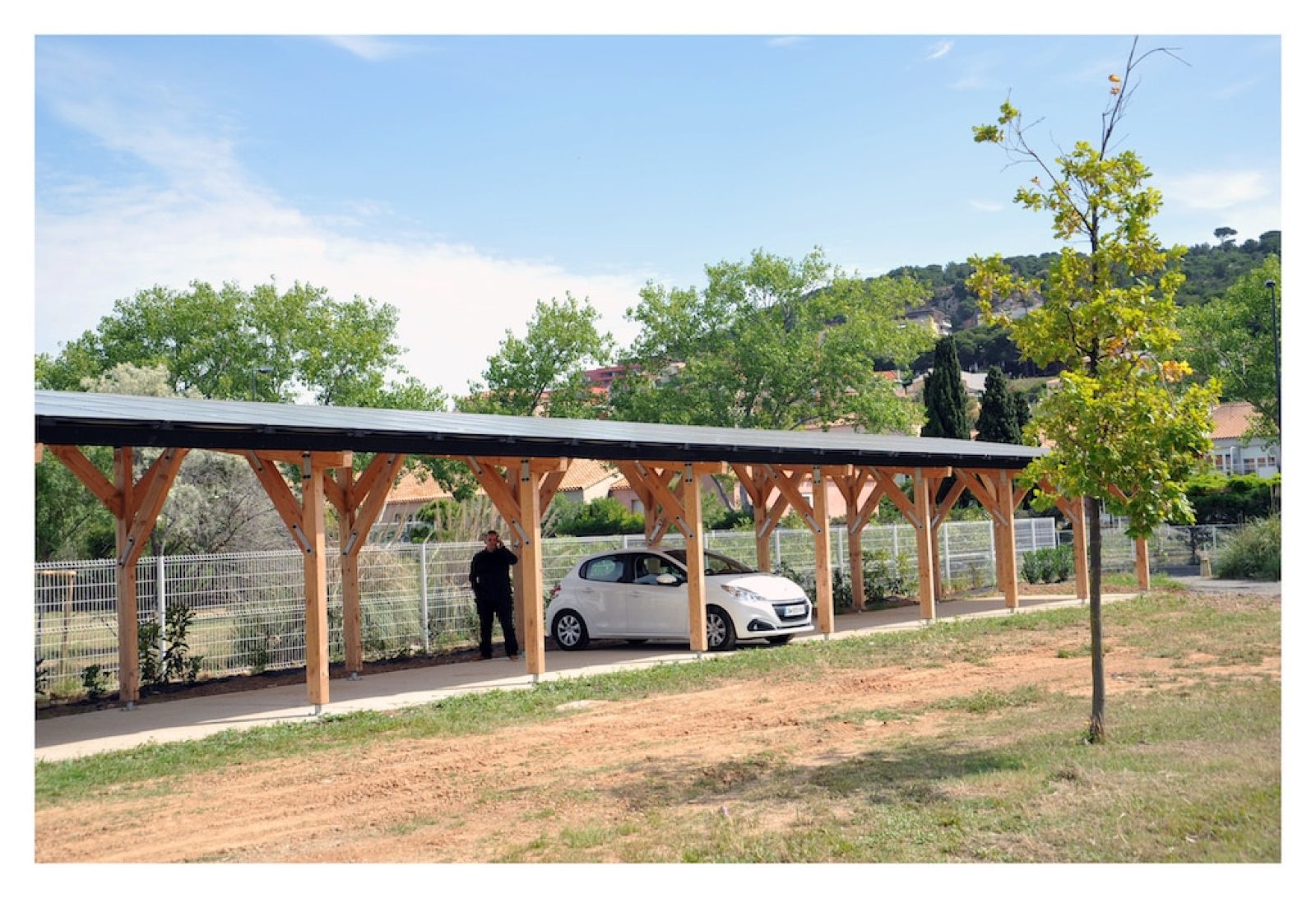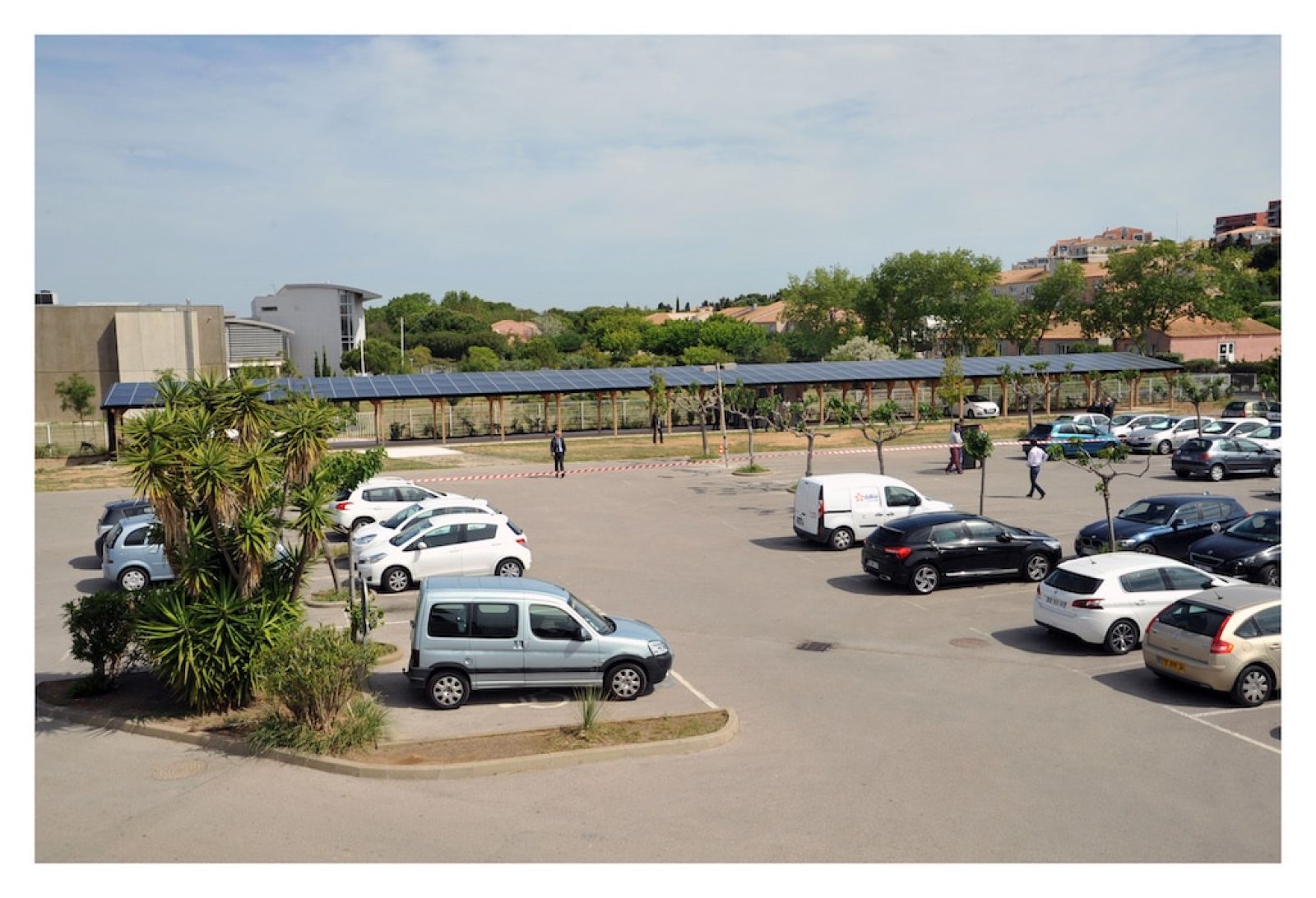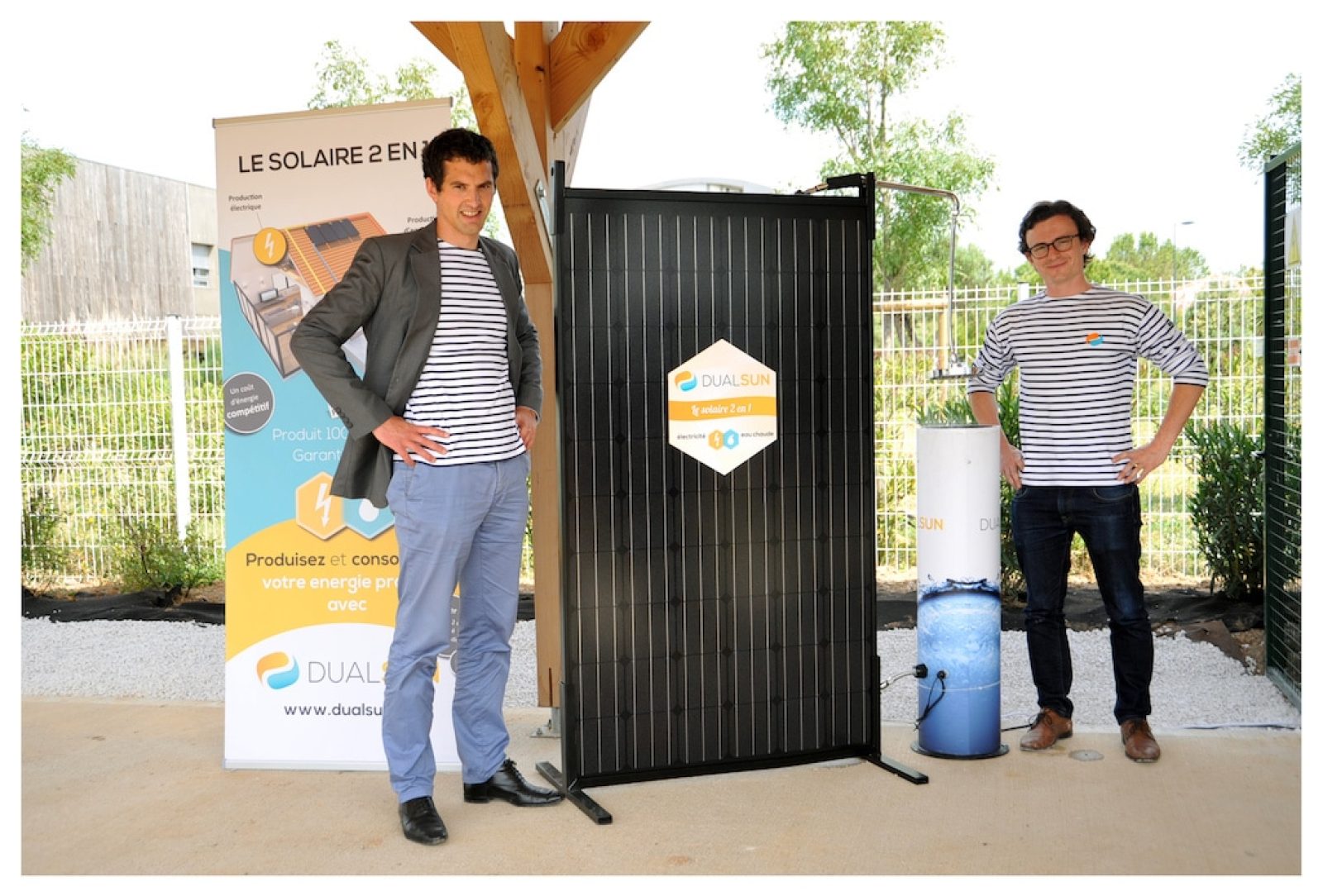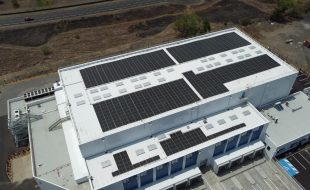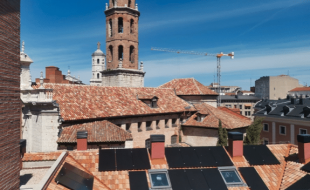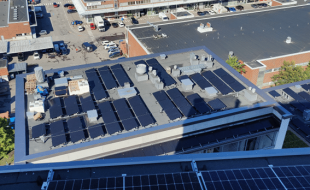This project in photos!

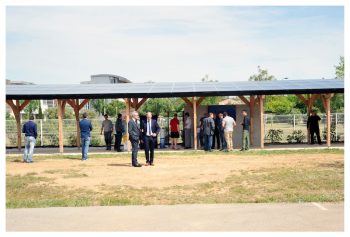
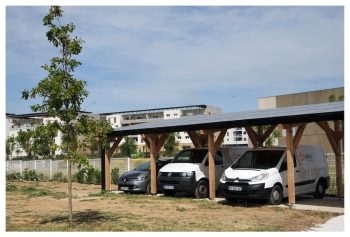
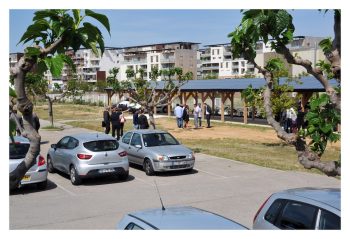


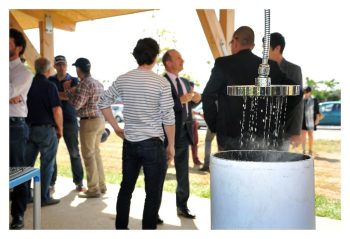
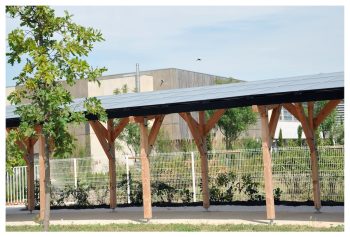
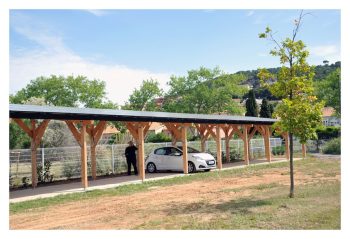
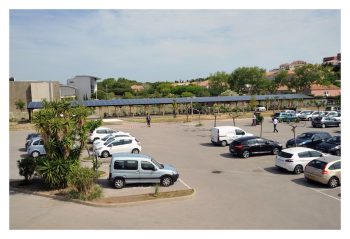
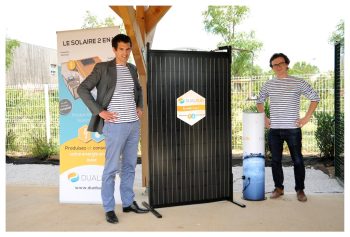
Once the most energy-hungry site in the municipality of Sète, the Raoul Fonquerne beach resort is now going solar with an ingenious heat production system. As Guillaume Chanussot, Dalkia’s project manager, explained at the inauguration, “solar energy is the priority”.
The Dualsun hybrid panels were installed on the solar shade in 2016. It is being monitored by ADEME as part of an NTE (New Emerging Technologies) program.
With a surface area of around 300 m², the 180 Dualsun panels installed on the sunshade (located on the pool parking lot) represent a total photovoltaic output of 45 kWp. Even though the sun’s rays are sufficient to keep the water in the three pools at a constant temperature, three water-to-water heat pumps reinforce the equipment to meet the needs of the site.
This Dualsun shading system produces around 180 MWh of energy, i.e. 3 times more than a photovoltaic system with the same surface area! What’s more, it allows you to park your car in the cool while you’re swimming in the heat!
- On the photovoltaic side, the electricity will be self-consumed directly on the pool site.
- As for hot water, the Dualsun panels are connected to 2 heat exchangers in the pool boiler room: the 1st for shower water and the 2nd for heating pool water.
The entire shading system will be used to protect parked cars, a real bonus for pool users.
Interview with Jean-Paul Girard,
DALKIA Project Manager.
I’m a thermal engineer and I have been working at DALKIA for 26 years in energy efficiency. I’ve worked in particular with renewable energy sources (biomass, solar), heat networks, electricity production, and of course on the energy efficiency of systems!
How did this project start?
Everything started with a similar project in Perpignan. We had won an Energy Performance Contract for the two cities which was supposed to generate a maximum of energy economies. I’m particuarly interested in innovative technologies and I had discovered Dualsun while reading Le Moniteur (a technical magazine) in 2012.In 2014, the ADEME created a new call for tender program called New Emerging Technologies (NET), it was the perfect opportunity to test this technology supported by this subsidy. There was a specific “hybrid solar” category, so we applied for Perpignan, and then for Sète.
How many people use this swimming pool?
120,000 people per year.
How is the energy generated by this installation used?
To produce hot water for the showers, to pre-heat the pools, and to generate electricity for the building.
Why did you chose Dualsun solar panels for this project?
We chose Dualsun because the panels are well adapted for heating swimming pools. These panels are designed to do low-temperature heating, which allows to optimize production. Moreover, with a swimming pool, there is a “match” between the consumption of the pools and the production of the panels that works well with solar. There is no need to store a lot of hot water, and it is easy to discharge surplus production in the swimming pools, which become thermal storage tanks for the installation! The Dualsun panels helped us win this project!
